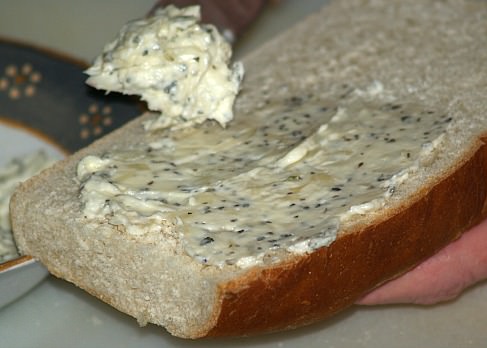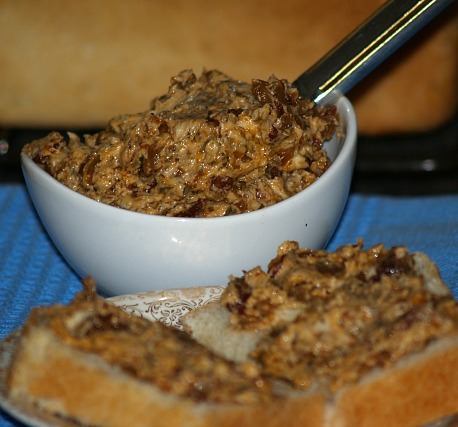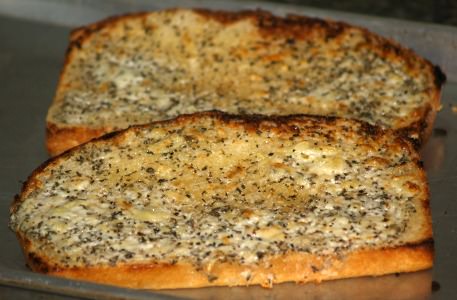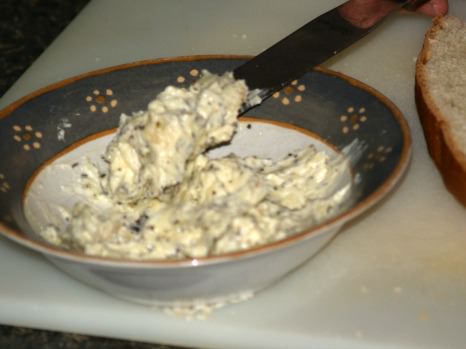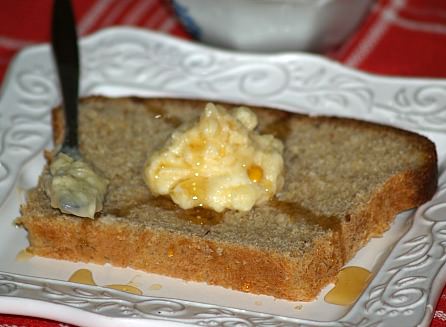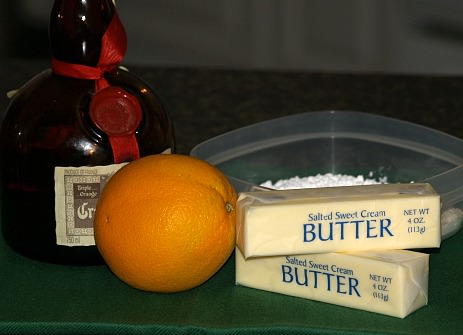How to Make Butter
I never really thought of learning how to make butter with milk until I watched Sister Ardice make it. I say “with milk” because people call cooked down fruits butter also. Most of these spreads like apple butter, pear butter, apricot butter, etc. actually have no butter in them. Here, I am referring to only butter made with cow’s milk.
Butter can be made with cow’s milk or goat’s milk. I have been told that goat’s milk is much more difficult to work with. Supposedly goat’s milk takes a lot longer to separate than cow’s milk. Often by the time you are ready to make butter, the cream has a strong goat taste in it. Many people do not like it. I know a lot of people do use goat’s milk for butter so I guess that they learned how to conquer this problem. I do not know much about making butter with goat’s milk.
Instead of learning how to make butter with milk, it has been so easy for me to buy good butter. I always buy good butter and not margarine so I have learned which ones are my favorites. Most Danish and Irish butters are very good. I also found great butter made by the Amish people and it is delicious in everything. Since I buy so much butter to cook with, I pick up a lot at Sam’s or Cusco. This always works well in my cooking and baking.
Like I said, I do not have a lot of experience with making butter. My Uncle Nevin had a dairy farm throughout my younger so we were always around milking cows and making butter. As soon as the cows were milked, the milk was poured into large milk pails (I believe galvanized) and taken to the spring house. Here the milk was cooled down quickly with ice water to a temperature of 50F degrees.
Most of the milk was stored here in the spring house until the truck came to take it to market. A minor portion of the fresh milk was kept for personal use. Of this milk, some was set aside to make sweet butter. Aunt Ruth knew how to make butter with milk so this was done as needed for personal consumption.
If butter was going to be made, a portion of the milk was kept in the ice water for about twelve hours. The butterfat would rise to the top and could be skimmed off to make sweet butter. (Later, my aunt and uncle bought a cream separator.) When making butter, keeping the correct temperature is of utmost importance. You really do need an accurate floating thermometer for this.
Those who know how to make butter from milk usually allow for a ripening process of the cream before churning. This makes a more flavorful tasting butter. To ripen raw milk, let the cream set at a temperature from 65F to 75F degrees until it is thick and slightly sour. Now the container must be cooled to churning temperatures and kept there for about 2 hours.
If the cream is too cold (Less than 52F in summer and 58F in winter) while churning, not all of the butterfat will separate from the butter. This results in less butter and a creamy buttermilk. If the temperature is too warm (More than 60F in winter and 66F in winter) the butter will be soft and greasy.
Pour the cream through a strainer into a clean churn filling only about one third full. Today, instead of the old wooden hand operated churns, we have available electrically powered glass churns. Small amounts of butter can be made in mixers, blenders, processors or shaking in a glass jar. Whatever you use, it should be sterilized with boiling water and cooled down before using.
The churning should take from thirty to forty minutes. After starting, stop a couple of times and lift the lid to allow the gas to escape. About twenty minutes into the churning you will begin to feel the thickening and hear beads forming. Remove the liquid left in the churn is a thin buttermilk which can be used in cooking and baking.
After removing the liquid, pour clean water over the butter to wash it. If the butter seems to be too warm and soft, use water that is cooler (less than 60F degrees). If the butter seems too hard wash with water over 60F degrees. Churn a few times and pour off the water; repeat this process until the water is clear. Pour the butter into a large bowl or crock. Press and squeeze the butter against the sides to work out every drop of water.
I mentioned that Sister Ardice knew how to make butter with milk but this was when I was older. She made what she called “sour butter” because keeping it at warm temperatures would cause the cream to sour. She would put 3 quarts of sweet milk with the cream in a churn. She would set it in a warm place, often next to the fireplace or heater for a whole day and night. Next she would churn the cream for about one hour. She would dip out the butter which floated to the top and wash it two times with cold water. After squeezing as much water out as possible she would add some salt and then put it into molds.
We all love great homemade butter, especially on homemade bread. Below are some recipes that you can make with the butter for spreads or to add to other dishes.
HOW TO MAKE BUTTER with STRAWBERRIES
- 1 Cup strawberries
- 2 Cups butter
- 1/2 Cup powdered sugar
COMBINE all ingredients in processor or blender and process until light in color.
CHILI BUTTER RECIPE
When you learn how to make butter (Or buy butter) make this flavorful butter to serve with lamb, veal or seafood.
- 1 Tablespoon tarragon
- 1 Tablespoon basil
- 1 Tablespoon marjoram
- 1 Tablespoon thyme
- 1 Tablespoon sage
- 1 Tablespoon rosemary
- 1 Teaspoon ground anise seed
- 1 Teaspoon ground fennel seed
- 1 Teaspoon cracked black pepper
- 2 Chopped cloves garlic
- 2 Bulbs chopped shallots
- 1 Pint Burgundy red wine
- 2 Cups softened butter
- 6 Tablespoons chili sauce
- 1 Tablespoon Worcestershire sauce
Combine herbs with red wine in a saucepan; boil until a paste forms; cool completely.
Beat butter, chili sauce and Worcestershire in a mixing bowl until blended; blend in the cooled herbs.
ITALIAN GARLIC BUTTER RECIPE
Learn how to make butter with the flavors of Italy!
- ½ Cup softened butter
- ¼ Cup mayonnaise
- 2 Tablespoons grated Parmesan cheese
- 1 Teaspoon dried basil
- ½ Teaspoon dried oregano
- 1 Clove minced garlic
Combine and beat together all ingredients.
To serve spread on slices of French bread or split bagels; broil about 2 to 3 minutes until golden brown.
Store in covered container up to 1 month.
HONEY BUTTER RECIPE
Learn how to make butter that is sweet honey taste.
- ½ Cup softened butter
- ½ Cup mild flavored honey
COMBINE and blend until smooth.
OPTION: Add 2 tablespoons fresh orange or lemon juice and 1 teaspoon grated peel.
OPTION: ½ Cup uncooked chopped prunes.
OPTION: Add 1 teaspoon cinnamon.
LEMON PARSLEY BUTTER RECIPE
- ¼ Cup softened butter
- ½ Teaspoon salt
- 1/8 Teaspoon pepper
- ½ Teaspoon finely chopped fresh parsley
- ¾ Tablespoon lemon juice
COMBINE and blend until smooth.
LEMON BUTTER
- ¼ Cup softened butter
- 1 Tablespoon lemon juice
BEAT until smooth.
ANCHOVY BUTTER RECIPE
- ¼ Cup softened butter
- Anchovy paste (To taste)
COMBINE and beat until smooth.
ORANGE BUTTER RECIPE
- ¾ Cup unsalted butter
- ¼ Cup sifted powdered sugar
- 1/3 Cup Grand Marnier
- 2 Tablespoons grated orange peel
CREAM butter and sugar until fluffy; add Grand Marnier and peel beating until smooth.
FLAVORED BUTTER OPTIONS
Garlic: ½ cup softened butter plus 3 cloves minced garlic.
Chive: ½ Cup softened butter plus 2 tablespoons minced chives.
Herb: ½ cup softened butter plus 2 tablespoons minced fresh basil, oregano, tarragon or chervil.
